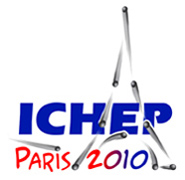Speaker
Mr
Tobias Koettig
(TU Dortmund)
Description
Even though more than 50 years have passed since the experimental detection of the neutrino, many important properties of this outstanding lepton are still unknown. It is the last elementary particle whose rest mast could not be measured yet, and because it is neutral it is also the only fundamental particle that may be its own anti-particle. Observation of neutrinoless double beta decay can clarify both important questions at once. But the expected half-life of more than 10^25 years for this decay is an ambitious challenge to experimental physics. Currently first experiments are under commissioning that will be able to probe this magnitude of half-lifes. If they succeed, it will be important to verify the results with other experiments using different isotopes and different approaches. If they do not succeed, again new approaches will be required.
COBRA provides the necessary properties to be an excellent candidate for such a successive experiment. It uses CdZnTe room-temperature semiconductor detectors that contain several double beta decay candidate isotopes, among them also beta+ emitters and two of the most promising isotopes, 130Te and 116Cd. 116Cd has a decay energy that lies even well above the naturally occurring gamma background.
The comparatively new semiconductor material CdZnTe has received more and more interest in recent years. Consequently, there has been major progress with these detectors and an end of the boost of this technology is not conceivable.
CdZnTe detectors are operated mainly with two readout techniques. The Co-Planar Grid (CPG) technology was developed specially for CdZnTe. With this approach energy resolutions better than 2% FWHM @ 662 keV can be achieved and such detectors are commercially available. During the last year, COBRA succeeded in growing CdZnTe crystals and producing detectors of this type from them. We acquired large experience in operating CPG detectors in ultra-low background mode and with the test set-up at the Italian underground laboratory LNGS half-life limits above 10^20 years for several isotopes and decay modes have been determined.
Operating CdZnTe as pixelated detectors is also possible. Besides in-depth Monte Carlo studies including charge transport also for the first time ever three different pixelated detector types have been operated in an ultra-low background environment. Results that will be shown demonstrate clearly the power of background suppression with this detector type. Furthermore, if applying pixelated detectors, COBRA is the only experiment that will have the opportunity of operating a kind of solid state TPC. Thus it can combine the large advantages of a source equals detector approach with the possibility of particle identification via particle track reconstruction.
Also studies to further reduce the currently achieved background level of less than 8 counts / keV / kg / yr are under investigation. They include in-depth Monte Carlo studies for a shielding for a large scale experiment as well as new innovative approaches such as operating CdZnTe detectors in liquid scintillator. These studies will further increase the huge potential of COBRA as the next generation experiment for the search for neutrinoless double beta decay.
Primary author
Mr
Tobias Koettig
(TU Dortmund)




